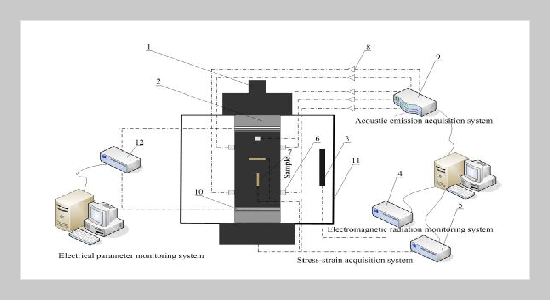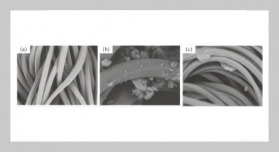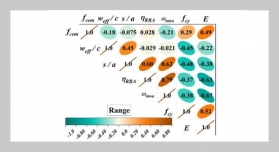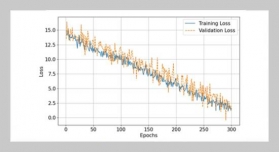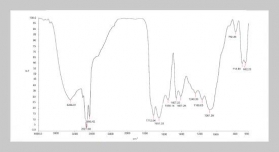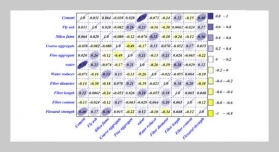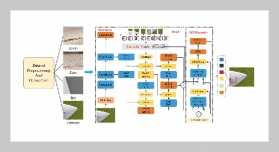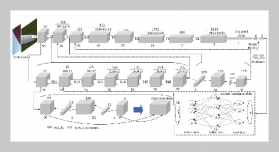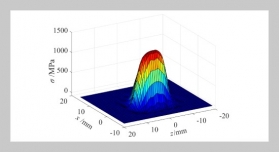Penghong Fan 1,2,3 and Baisheng Nie 2,3
1Department of Mining Engineering, Shanxi Institute of Technology, 045000, Shanxi, China
2School of Emergency Management and Safety Engineering, China University of Mining & Technology (Beijing), 100083, Beijing, China
3State Key Laboratory of Coal Resources and Safe Mining, China University of Mining & Technology (Beijing), 100083, Beijing, China
Received:
August 10, 2021
Accepted:
December 11, 2021
Publication Date:
January 28, 2022
Copyright The Author(s). This is an open access article distributed under the terms of the Creative Commons Attribution License (CC BY 4.0), which permits unrestricted use, distribution, and reproduction in any medium, provided the original author and source are cited.
Download Citation: ||https://doi.org/10.6180/jase.202212_25(6).0004
ABSTRACT
In order to study the response of resistivity and electromagnetic radiation at different stages of deformation and failure of loaded coal, the real-time measurement system of acoustic emission, electrical parameters and electromagnetic radiation of loaded coal was established, the variation characteristics of resistivity and electromagnetic radiation pulse were tested respectively in the vertical bedding direction of different coal under uniaxial loading, and the variation regularity was discussed. The research results indicate that in the initial compaction stage, the electromagnetic radiation pulse increases and the resistivity fluctuates to a certain extent with the closure of coal pores and fissures. In the elastic stage, the EME (Electromagnetic Effects) pulses and change of resistivity decrease greatly and the change curve of resistivity is close to be linear. In the unstable development stage, the EME pulses show the peak value, the resistivity fluctuates obviously and tends to decrease further before the stress peak. Through the comparative analysis of resistivity and electromagnetic radiation pulse, the increasing area of electromagnetic radiation pulse generally appears in the area with the large changes of resistivity.
Keywords:
resistivity; electromagnetic radiation; uniaxial compression; coal
REFERENCES
- [1] D. Song, X. Liu, X. He, B. Nie, and W. Wang, (2021) “Investigation on the surface electrical characteristics of coal and influencing factors" Fuel 287: 119551. DOI: https://doi.org/10.1016/j.fuel.2020.119551.
- [2] S. Liu, X. Li, Z. Li, P. Chen, X. Yang, and Y. Liu, (2019) “Energy distribution and fractal characterization of acoustic emission (AE) during coal deformation and fracturing" Measurement 136: 122–131. DOI: doi:https://doi.org/10.1016/j.measurement.2018.12.049.
- [3] H.-W. Jing, Z.-Y. Zhang, and G.-A. Xu, (2008) “Study of electromagnetic and acoustic emission in creep experiments of water-containing rock samples" Journal of China University of Mining and Technology 18(1): 42–45. DOI: https://doi.org/10.1016/S1006-1266(08)60009-7.
- [4] A. Pralat and S. Wojtowicz, (2004) “Electromagnetic & acoustic emission from the rock-experimental measurements" Acta Geodynamica et Geomaterialia 1: 111–119.
- [5] Y.-g.WANG, J.-p. WEI, and M.-j. LIU, (2010) “Analysis on factors affected to electromagnetic parameters of tectonic soft seam" Coal Science and Technology 8:
- [6] I. Brach, J. Giuntini, and J. Zanchetta, (1994) “Real part of the permittivity of coals and their rank" Fuel 73(5): 738–741. DOI: https://doi.org/10.1016/0016-2361(94)90017-5.
- [7] H. Dindi, X.-h. Bai, and W. B. Krantz, (1989) “Thermal and electrical property measurements for coal" Fuel 68(2): 185–192. DOI: https://doi.org/10.1016/0016-2361(89)90321-9.
- [8] D. Lei, C. Zhao, Y. Zhang, and S. Liu, (2018) “Experimental study on characteristics of water containing coal complex resistivity dispersion" Journal of Loss Prevention in the Process Industries 56: 328–333. DOI: https://doi.org/10.1016/j.jlp.2018.09.011.
- [9] H.-H. Ryu, C.-H. Hong, and G.-C. Cho, (2020) “Electrical resistivity of a jointed rock mass with an anomaly" Journal of Applied Geophysics 183: 104206. DOI: https://doi.org/10.1016/j.jappgeo.2020.104206.
- [10] W. Brace and A. Orange, (1968) “Electrical resistivity changes in saturated rocks during fracture and frictional sliding" Journal of geophysical research 73(4): 1433–1445. DOI: https://doi.org/10.1029/JB073i004p01433.
- [11] G. Chen and Y. Lin, (2004) “Stress–strain–electrical resistance effects and associated state equations for uniaxial rock compression" International Journal of Rock Mechanics and Mining Sciences 41(2): 223–236. DOI: https://doi.org/10.1016/S1365-1609(03)00092-3.
- [12] C. Dayuan, C. Feng, and H. Guoyu, (1988) “Influence of “stress reversal” on rock resistivity during loading procedure" Acta Seismologica Sinica 1(3): 84–92. DOI: https://doi.org/10.1007/BF02652497.
- [13] F. Chen, J.-G. Xiu, J.-Z. An, C.-T. Liao, and D.-Y. Chen, (2000) “Detecting rupture precursors and determining the main fracture spread direction of rock with dynamic rock resistivity change anisotropy" Acta Seismologica Sinica 13(2): 234–237. DOI: https://doi.org/10.1007/s11589-000-0015-x.
- [14] W. Enyuan, C. Peng, L. Zhonghui, et al., (2014) “Resistivity response in complete stress-strain process of loaded coal" Journal of China Coal Society 33(11): 2220–2225. DOI: 10.13225/j.cnki.jccs.2013.1070.
- [15] X. Li, Q. Zhang, and Z. An, (2021) “Experimental study on Influencing factors of electrical parameters of different kinds of coal mass" Journal of China University of Mining & Technology 50(3): 570–578. DOI: 10.13247/j.cnki.jcumt.001289.
- [16] X. C. Li, F. B. Liu, B. S. Nie, Y. J. Wang, L. Li, Z. W. Wang, X. Zheng, Q. Guo, and C. L. Yang. “The experiment of coal body electrical parameters under triaxial stress”. In: Applied Mechanics and Materials. 295. Trans Tech Publ. 2013, 2924–2927. DOI: 10.4028/www.scientific.net/AMM.295-298.2924.
- [17] X. Li, L. Zhang, B. Nie, C. Yang, and F. Zhu, (2018) “Law of relative dielectric constant of coal under different stresses and gas pressures" J Min Sci Technol 3(4): 349–355. DOI: 10.19606/j.cnki.jmst.2018.04.005.
- [18] P. Chen, E. Wang, X. Chen, Z. Liu, Z. Li, and R. Shen, (2015) “Regularity and mechanism of coal resistivity response with different conductive characteristics in complete stress–strain process" International Journal of Mining Science and Technology 25(5): 779–786. DOI: https://doi.org/10.1016/j.ijmst.2015.07.013.
- [19] L. MENG, M.-j. LIU, Y.-g.WANG, et al., (2010) “Study on the rules of electrical resistivity variation of tectonic coal in uniaxial compression experiment" Journal of China Coal Society 35(12): 2028–2032. DOI: 10.1016/S1876-3804(11)60004-9.
- [20] J.-j. Chen, L. Jiang, Y. Zhang, and T. Zhang, (2011) “Study on coal conductive properties of different coal structure" Coal Science and Technology 39(7): 90–92. DOI: CNKI:SUN:MTKJ.0.2011-07-023.
- [21] Chai, B., Xu, X.K., Zhang, and e. a. C. “Characteristics of resistivity and its anisotropy of six kinds of metamorphic coals”. In: Progress in Geophysics ( in Chinese). 36. in Chinese. 2021, 1046–1051.
- [22] C. Lü and Q. Sun, (2018) “Electrical resistivity evolution and brittle failure of sandstone after exposure to different temperatures" Rock Mechanics and Rock Engineering 51(2): 639–645. DOI: https://doi.org/10.1007/s00603-017-1351-7.


